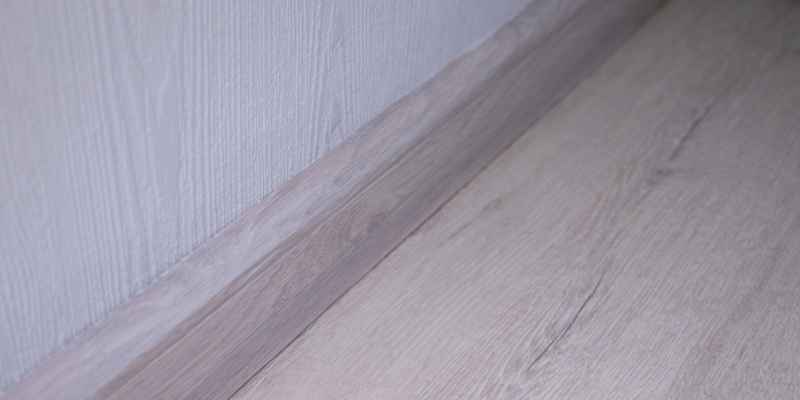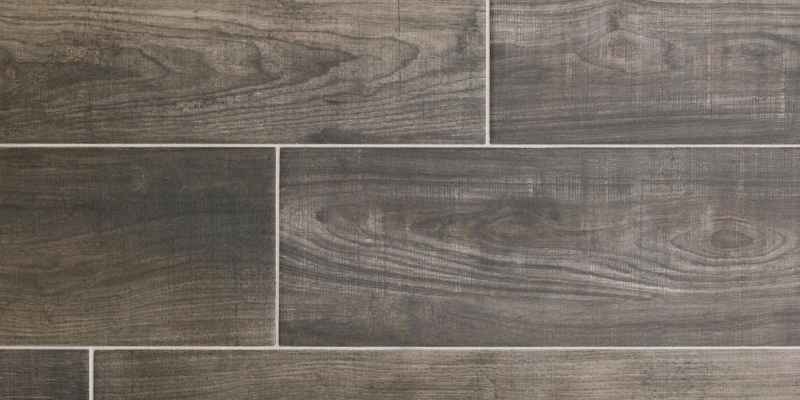To make wood look like plastic, sand the wood smooth, apply a primer, and then use a high-gloss paint or finish. This will give the wood a shiny, plastic-like appearance.
Creating a plastic-like finish on wood can be a fun and creative way to achieve a modern and sleek look for your furniture and decor. Whether you want to update an old piece of furniture or create a unique DIY project, transforming wood into a plastic-like finish can add a contemporary touch to your home.
By following the right steps and using the appropriate materials, you can easily achieve a glossy and polished look that resembles plastic on your wooden surfaces. Let’s explore the step-by-step process to achieve this transformation and the materials required to make wood look like plastic.
Introduction To Transforming Wood
Why Mimic Plastic?
There are various reasons why you might want to make wood look like plastic. Mimicking plastic allows you to achieve a modern and sleek aesthetic, making the wood appear more contemporary and polished. Additionally, transforming wood to look like plastic can enhance its durability and make it more resistant to moisture and wear. This technique also provides an opportunity to experiment with different textures and finishes, opening up a world of creative possibilities.
Materials Needed
- Wooden surface to be transformed
- Sandpaper (various grits)
- Primer
- High-gloss paint
- Paintbrushes or spray gun
- Plastic-like finish (optional)
Prepping The Wood Surface
Before you can transform your wood into a plastic-like finish, it’s essential to properly prepare the surface. This step is crucial for achieving a smooth and flawless result. By following the right prepping techniques, you can ensure that the wood is clean and ready for the transformation process.
Cleaning
To start, thoroughly clean the wood surface to remove any dirt, dust, or grime that might be present. Cleaning the wood will help the plastic finish adhere better and result in a more professional look. Here are some simple steps to follow:
- Begin by wiping down the wood with a damp cloth to remove any loose debris.
- Next, mix a mild detergent or wood cleaner with warm water.
- Dip a clean cloth into the soapy water and gently scrub the wood surface, paying attention to any stubborn stains or marks.
- Rinse the wood thoroughly with clean water to remove any soap residue.
- Allow the wood to dry completely before moving on to the next step.
Sanding Techniques
Once the wood is clean and dry, sanding is the next step in the prepping process. Sanding helps to smooth out any rough patches, remove old finishes, and create a surface that is ready for the plastic-like coating. Here are some sanding techniques to consider:
- Start by using a coarse-grit sandpaper (around 80 grit) to remove any existing coatings or rough spots on the wood surface.
- Sand in the direction of the wood grain, applying even pressure to ensure a consistent result.
- As you progress, switch to a finer-grit sandpaper (around 120-220 grit) to further smooth out the wood.
- Continue sanding until the wood feels smooth to the touch and any imperfections are minimized.
- After sanding, use a tack cloth or a soft brush to remove any sanding dust from the surface.
By properly cleaning and sanding the wood, you’ll create a solid foundation for achieving a plastic-like finish. These prepping techniques ensure that the wood is free from dirt and imperfections, allowing the subsequent steps of the transformation process to be more effective.
Priming For Perfection

Learn how to make wood look like plastic with the technique of priming for perfection. This process involves sanding, priming, and painting to achieve a smooth and glossy finish on wood surfaces that mimics the appearance of plastic.
Selecting The Right Primer
Before you start the process of making wood look like plastic, you need to select the right primer. A good primer will not only help you achieve a smooth and even finish but also ensure that the paint adheres properly to the surface. There are different types of primers available in the market, and you need to choose one that is suitable for your project.
For instance, if you are working on a surface that is prone to water damage, then you should choose a primer that is water-resistant. On the other hand, if you are working on a surface that has a lot of knots, then you should choose a primer that can seal the knots and prevent them from bleeding through the paint.
Application Tips
Once you have selected the right primer, it’s time to start the application process. Here are some application tips to ensure that you get the best results:
- Clean the surface thoroughly before applying the primer. Any dirt or dust on the surface can affect the adhesion of the primer and paint.
- Apply the primer in thin coats. Thick coats can lead to drips and uneven surfaces.
- Allow the primer to dry completely before applying the paint. This will ensure that the paint adheres properly to the surface and doesn’t peel off.
- Use a high-quality brush or roller to apply the primer. This will ensure that the primer is applied evenly and smoothly.
By following these tips, you can ensure that your wood surface looks like plastic. Remember to select the right primer and apply it properly for the best results. With a little patience and effort, you can transform any wood surface into a plastic-like finish.
Choosing Paints And Finishes
To make wood resemble plastic, select paints and finishes that offer a glossy, smooth texture. Opt for high-gloss or satin paint in vibrant colors, and apply several thin coats to achieve a flawless, plastic-like appearance. Use a clear varnish or lacquer as a topcoat to enhance the shine and durability of the finish.
Types Of Paints
Using the right paint is crucial for achieving a plastic-like finish on wood. Acrylic paint is popular for its durability and versatility. Oil-based paints offer a smoother finish but take longer to dry. Enamel paints provide a glossy, hard finish perfect for mimicking plastic.
Glossy Finish Secrets
To enhance the plastic effect, opt for high-gloss finishes. Apply multiple thin coats for a smooth, reflective surface. Sand between coats with fine-grit sandpaper to remove imperfections. Finish with a clear topcoat to seal and protect the painted wood.
Paint Application Techniques
When it comes to making wood look like plastic, choosing the right paint application technique is crucial. The right method can help you achieve a smooth, flawless finish that mimics the appearance of plastic. In this section, we will explore two popular techniques: brush and spray application.
Brush Vs. Spray
Choosing between brush and spray application depends on various factors, including the size of the project, the type of paint you are using, and personal preference. Both methods have their advantages and considerations to keep in mind.
Brush Application:
Brush application is a popular choice for smaller projects or when working with intricate details. It allows for more control and precision, especially when working on curved or uneven surfaces. Here are a few key points to consider when using the brush application technique:
- Use a high-quality brush with synthetic bristles to ensure smooth and even application.
- Apply the paint in thin, even coats, working in the direction of the wood grain.
- Allow each coat to dry completely before applying the next layer to avoid streaks or clumps.
- Sand the surface lightly between coats to promote adhesion and create a smoother finish.
Spray Application:
Spray application is ideal for larger projects or when you need to cover a large surface area quickly. It provides a smooth, professional finish and is often the preferred method for achieving a plastic-like appearance. Here are some tips to consider when using the spray application technique:
- Ensure you have a well-ventilated area or work outdoors to avoid inhaling paint fumes.
- Use a spray gun or paint sprayer specifically designed for wood surfaces.
- Apply the paint in thin, even coats, overlapping each pass slightly for complete coverage.
- Keep the spray gun or sprayer at a consistent distance from the wood surface for uniform application.
Achieving Even Coats
Regardless of the application technique you choose, achieving even coats is essential for a flawless plastic-like finish. Here are some additional tips to ensure your coats are consistent:
- Stir the paint thoroughly before application to ensure an even distribution of pigments.
- Test the paint on a small, inconspicuous area of the wood to ensure the desired color and consistency.
- Apply the paint in multiple thin coats rather than one thick coat to prevent drips and uneven drying.
- Allow each coat to dry completely before applying the next layer, following the manufacturer’s recommended drying time.
- Inspect the surface in natural light to identify any missed spots or areas that require touch-ups.
By following these paint application techniques, you can transform wood into a material that closely resembles plastic. Whether you opt for brush or spray application, remember to take your time, work in a well-ventilated area, and aim for even, thin coats to achieve the best results.
Adding The Plastic Effect

Achieve a sleek plastic effect on wood by using high-gloss paint or polyurethane varnish. Sand the surface smooth before applying multiple thin coats for a shiny, plastic-like finish. Experiment with different colors and finishes for a unique and modern look.
Adding the Plastic Effect is the final step in making wood look like plastic. It involves simulating the smooth, glossy finish of plastic. To achieve this effect, there are two main techniques to focus on: Creating Smooth Surfaces and Simulating Plastic Textures.
Creating Smooth Surfaces involves sanding the wood with increasingly finer grits of sandpaper until the surface is completely smooth. This step is crucial in achieving a plastic-like finish, as any rough spots or imperfections will be magnified by the glossy finish. A good practice is to use a sanding block to ensure even sanding and avoid over-sanding certain areas.
Simulating Plastic Textures involves using a plastic filler to fill in the wood grain and create a smooth, even surface. There are many products on the market for this purpose, such as wood filler or Bondo. Apply the filler with a putty knife, and make sure to fill in any gaps or holes. Once the filler dries, sand it down until it is flush with the wood surface.
To achieve the glossy, plastic-like finish, apply a plastic primer to the surface. This will help the paint adhere to the surface and create a smooth, even base. Once the primer is dry, apply several coats of high-gloss paint, using a foam roller or sprayer for the smoothest finish.
In conclusion, achieving a plastic-like finish on wood requires attention to detail and careful preparation. By creating smooth surfaces and simulating plastic textures, you can achieve a glossy, professional finish that will make your wood look like plastic.
Protective Coatings
Protective coatings are essential to achieve a plastic-like finish on wood. Choosing the right sealant is crucial.
Types Of Sealants
There are various types of sealants available for wood, such as polyurethane, lacquer, and epoxy.
Application Guide
- Clean the wood surface thoroughly before applying the sealant.
- Use a brush or spray gun for an even application.
- Allow each coat to dry completely before applying the next one.
- Sand the surface lightly between coats for a smooth finish.
Final Touches And Care
Detail Work
For intricate areas, meticulous detail work is essential.
Maintenance Tips
- Use a mild soap and water mixture for regular cleaning.
- Avoid harsh chemicals to preserve the finish.
- Apply a protective coating to enhance durability.
Frequently Asked Questions
How Can I Make Wood Look Like Plastic?
To make wood look like plastic, you can apply a high-gloss polyurethane finish. Sand the wood smooth, apply a primer, and then use a high-quality paint. Finish with a clear coat of polyurethane for a shiny, plastic-like appearance.
What Are The Benefits Of Making Wood Look Like Plastic?
By making wood look like plastic, you can achieve a modern, sleek aesthetic while still retaining the natural texture of wood. This technique also provides durability, moisture resistance, and easy maintenance, making it ideal for high-traffic areas and outdoor furniture.
Can Any Type Of Wood Be Transformed To Look Like Plastic?
Yes, almost any type of wood can be transformed to look like plastic. However, it’s important to choose a wood with a smooth surface and minimal grain for the best results. Woods like maple, birch, and poplar are popular choices for achieving a plastic-like finish.
Conclusion
Incorporating these techniques can transform wood into a high-gloss, plastic-like finish. Enhance your woodworking projects with these simple methods. Achieve a sleek and polished appearance with the right tools and products. Elevate your crafting skills by mastering the art of mimicking plastic on wood surfaces.
Experiment, practice, and enjoy the transformation!


